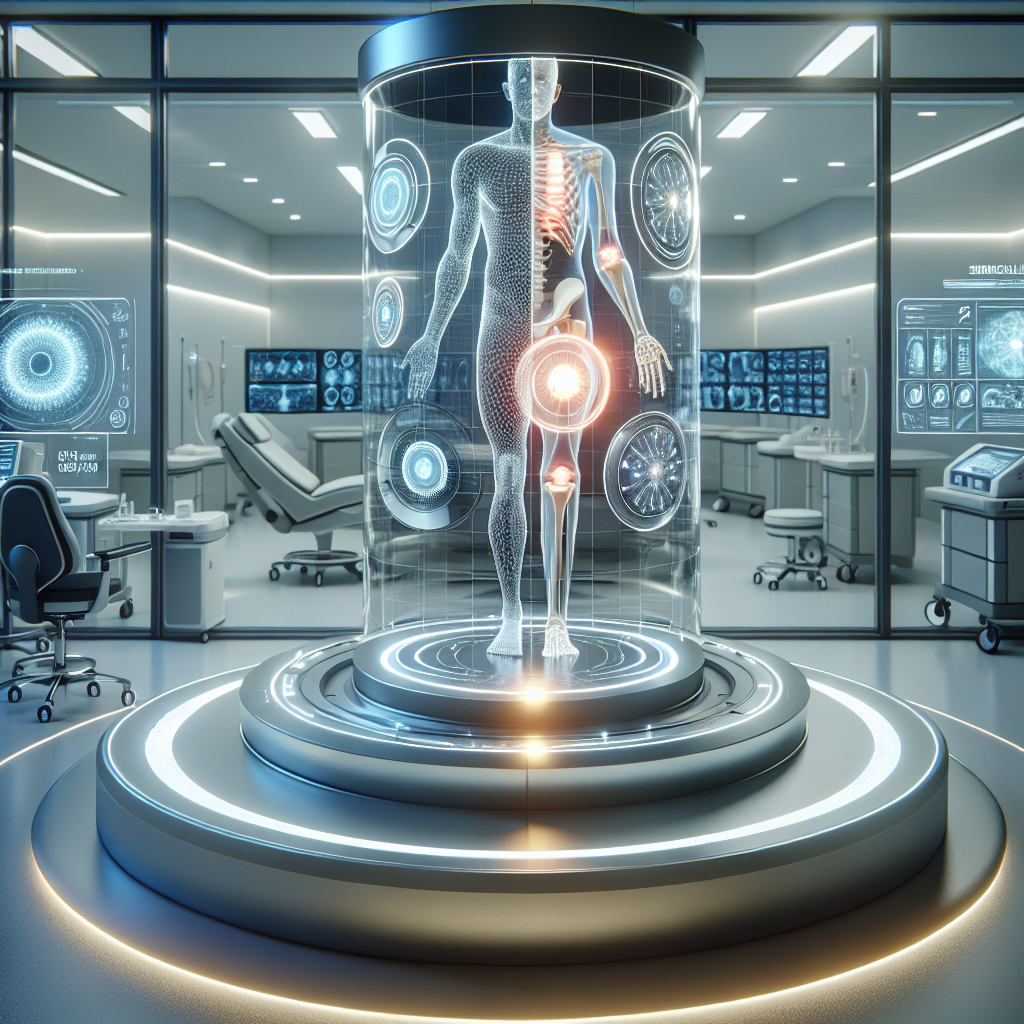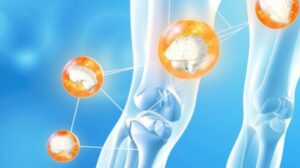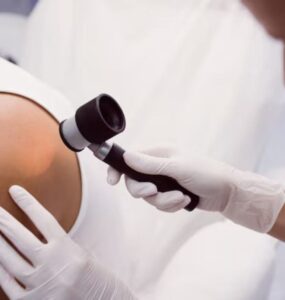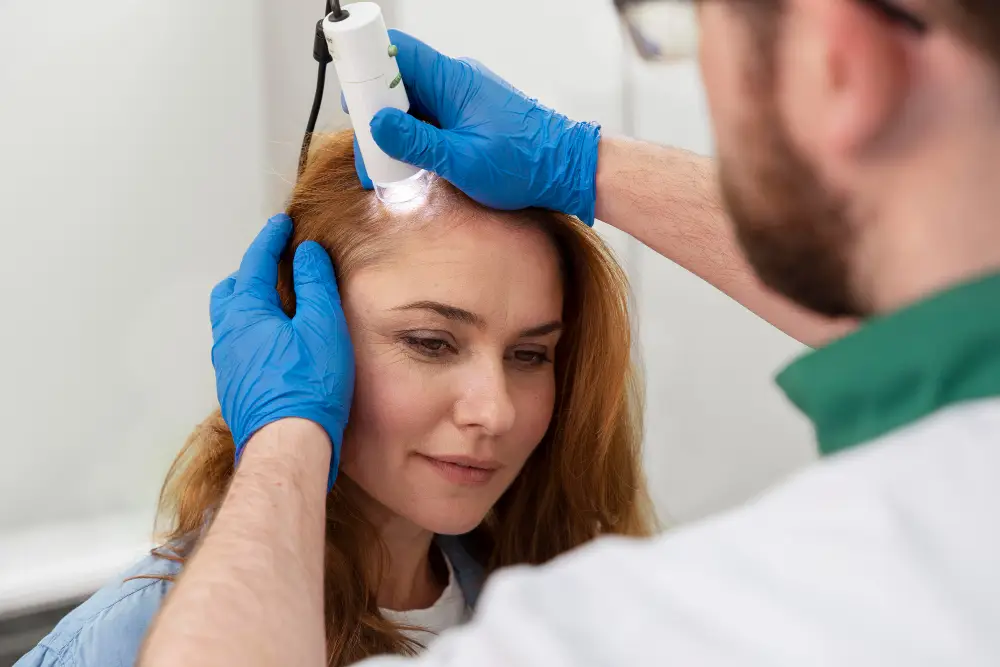
Key Takeaways for Your Joint Health Journey
- Chronic joint pain affects millions, significantly impacting quality of life, and conventional treatments may offer limited relief for some.
- Regenerative approaches, including stem cell treatment for joints, represent an evolving area of research focused on supporting the body’s natural healing processes.
- Exploring international options like those in Pereira, Colombia, provides access to regulated pathways within a comprehensive care environment.
- The Regencord team prioritizes education, transparency, and a meticulously managed patient journey, addressing logistical concerns for those considering care abroad.
- Making an informed decision requires understanding both the science and the contextual advantages of a potential treatment destination.
Understanding Stem Cell Treatment for Joints: Navigating Your Options for Relief
Table of Contents
- Introduction: Exploring Pathways for Chronic Joint Pain
- The Stakes: Living with Chronic Joint Pain and the Search for Solutions
- The Conventional Approach to Joint Pain in the USA
- Stem Cells and Joint Health: An Evolving Frontier
- The Pereira, Colombia Advantage: A Holistic Environment for Joint Care
- The Joint Clarity Navigator: A Regencord Pathway Checklist
- Our Regenerative Philosophy and Patient-Centric Approach
- Overcoming Common Hesitations: Why Seeking Clarity is a Strategic Advantage
- Glossary of Key Terms
- Frequently Asked Questions About Stem Cell Treatment for Joints
- Your Next Step Towards Informed Decision-Making
- Disclaimer
Introduction: Exploring Pathways for Chronic Joint Pain
Living with chronic joint pain can be a profoundly limiting experience. From the simple act of walking to enjoying hobbies, the constant discomfort can diminish quality of life and create a frustrating cycle of seeking temporary relief. For many, traditional treatments for chronic joint pain offer only partial solutions, leading individuals to explore the evolving landscape of regenerative medicine, including stem cell treatment for joints. This guide is designed to provide comprehensive, ethical information, helping you understand your options and the potential pathways available, particularly focusing on the advantages of considering care in Pereira, Colombia.
Our aim is not to provide medical advice or recommend a specific treatment, but rather to empower you with knowledge about the current understanding of regenerative approaches and what to consider when exploring them. We understand the anxieties that accompany such a personal health journey, and we are here to offer clarity and support.
The Stakes: Living with Chronic Joint Pain and the Search for Solutions

Chronic joint pain is a widespread issue, impacting millions globally. Conditions like osteoarthritis, rheumatoid arthritis, and injuries can lead to the deterioration of cartilage, inflammation, and persistent discomfort. According to the World Health Organization (WHO), musculoskeletal conditions are a leading cause of disability worldwide, with joint pain being a significant contributor. This pain doesn’t just affect physical mobility; it often leads to sleep disturbances, mental health challenges, and a reduced capacity for daily activities, fundamentally altering one’s lifestyle.
Source: World Health Organization (WHO) reports on musculoskeletal conditions.
The quest for effective, long-lasting relief often becomes a central focus for those affected. Patients frequently cycle through various interventions, from pain medication and physical therapy to corticosteroid injections, and in many cases, surgical interventions like joint replacement. While these methods can provide significant relief for some, others continue to seek alternatives that address the underlying issues of joint degeneration and inflammation, looking for ways to support the body’s natural processes. This pursuit leads many to consider advanced therapies like stem cell treatment for joints, which are at the forefront of regenerative medicine research.
The Conventional Approach to Joint Pain in the USA

In the USA, the treatment landscape for chronic joint pain is well-established, guided by institutions like the U.S. National Institutes of Health (NIH) and regulatory bodies such as the U.S. Food and Drug Administration (FDA). Standard care typically begins with conservative measures. These often include:
- Physical Therapy: Designed to strengthen supporting muscles, improve joint flexibility, and reduce pain through targeted exercises.
- Medication Management: Over-the-counter pain relievers (like NSAIDs), prescription medications, and sometimes topical creams to manage inflammation and pain.
- Injections: Corticosteroid injections can reduce inflammation and provide temporary pain relief, while hyaluronic acid injections aim to lubricate the joint.
- Lifestyle Modifications: Weight management and activity adjustments to reduce stress on affected joints.
- Surgical Intervention: For severe cases, procedures such as arthroscopy, osteotomy, or total joint replacement are considered when conservative treatments no longer suffice.
Source: U.S. National Institutes of Health (NIH) guidelines on arthritis and joint pain management.
While these conventional treatments are often effective, they may not provide sustained relief for everyone, particularly those experiencing advanced degeneration or those seeking alternatives to invasive surgery. The FDA has approved specific stem cell-based products for limited uses, such as certain blood cancers and disorders. However, for most orthopedic conditions, including stem cell treatment for joints, these therapies are largely considered experimental or are provided under specific research protocols in the USA, leading some patients to explore options where these pathways are more widely regulated for clinical application.
Stem Cells and Joint Health: An Evolving Frontier

Stem cell treatment for joints falls under the umbrella of regenerative medicine, an exciting and rapidly advancing field. Stem cells are unique in their ability to differentiate into various cell types and to aid in tissue repair. For joint applications, the focus is often on mesenchymal stem cells (MSCs), which can be sourced from a patient’s own bone marrow or adipose (fat) tissue.
How Stem Cells are Thought to Work in Joints
Research, including studies highlighted by the NIH and published in PubMed-indexed journals, suggests that stem cells introduced into a damaged joint may exert several beneficial effects:
- Modulating Inflammation: Stem cells have demonstrated immunomodulatory properties, meaning they can help regulate the inflammatory response within the joint, a key factor in chronic joint pain.
- Supporting Tissue Repair: While not directly regenerating complex structures like cartilage in its original form, stem cells are believed to release growth factors and other molecules that can stimulate the body’s own reparative processes. This includes potential for synovial membrane regeneration, which is crucial for joint lubrication and health.
- Promoting a Healing Environment: By influencing the local cellular environment, stem cells may help to create conditions more favorable for tissue engineering and natural healing, potentially slowing down degeneration and improving joint function.
Source: Various PubMed-indexed peer-reviewed journals on regenerative medicine; U.S. National Institutes of Health (NIH) research initiatives on stem cells.
It is important to understand that while promising, the field of stem cell treatment for joints is continually evolving. Definitive, long-term clinical outcomes are still under investigation globally, with many ongoing trials registered on ClinicalTrials.gov. Patients considering these pathways should seek comprehensive information and understand the current state of research and regulatory frameworks.
The Pereira, Colombia Advantage: A Holistic Environment for Joint Care

When considering advanced treatment pathways, exploring international options can open new avenues. Pereira, Colombia, has emerged as a compelling destination for those seeking comprehensive care, particularly within the field of regenerative medicine for joint conditions. The advantage of Pereira extends beyond the medical procedures themselves, encompassing a unique blend of regulatory oversight, advanced infrastructure, patient-centric support, and a conducive healing environment.
A Regulated Framework for Medical Care
One of the primary concerns for patients considering international medical care is the legitimacy and safety of the procedures. Colombia boasts a robust and well-regulated healthcare system. The Colombian Ministry of Health (MinSalud) oversees healthcare policies and standards, ensuring that medical facilities and professionals adhere to national guidelines. Furthermore, INVIMA (National Food and Drug Surveillance Institute of Colombia) plays a crucial role similar to the FDA, regulating medical devices, biologics, and clinical practices, providing an important layer of patient protection and quality assurance for procedures like stem cell treatment for joints.
Source: Colombian Ministry of Health (MinSalud); INVIMA (National Food and Drug Surveillance Institute of Colombia).
This regulatory environment ensures that facilities operating in Colombia maintain high standards of patient safety and ethical practice. It’s a testament to the country’s commitment to providing quality medical services, a fact often overlooked by those unfamiliar with its advanced healthcare infrastructure.
Modern Facilities and Skilled Professionals
Colombia has invested significantly in modern medical infrastructure, and Pereira is no exception. Patients will find state-of-the-art clinics and hospitals equipped with advanced diagnostic and treatment technologies. Many Colombian medical professionals, including those specializing in regenerative medicine, receive extensive training, often with international experience, ensuring a high level of clinical expertise. The collaborative approach among medical teams contributes to comprehensive patient care, from initial consultation to post-procedure follow-up.
The Integrated Patient Journey
Our experience shows that the greatest value in international medical care lies not just in the treatment itself, but in a meticulously orchestrated patient journey. Patients seeking advanced joint care, especially for chronic joint pain, often face an overwhelming ‘information vortex’ and significant logistical anxiety. The Regencord team in Pereira, Colombia, understands this profoundly. We differentiate by providing an integrated pathway that addresses every logistical concern, transforming potential apprehension into a guided, confident experience. This includes assistance with travel, accommodation, local transportation, and communication, ensuring a seamless experience.
Synthetic Contextual Insight 1: Patients seeking advanced joint care, particularly those exploring regenerative options internationally, often face an overwhelming ‘information vortex’ and significant logistical anxiety. Our experience shows that the greatest value lies not just in the treatment itself, but in a meticulously orchestrated patient journey that pre-emptively addresses every logistical concern, from initial inquiry to post-procedure support, transforming potential apprehension into a guided, confident experience. This orchestration significantly differentiates a positive international medical journey from a fragmented, stressful one.
The Serene Healing Environment
Beyond clinical facilities, the recovery environment profoundly impacts a patient’s healing trajectory and overall satisfaction. Pereira, nestled in Colombia’s Coffee Region, offers a unique blend of modern urban amenities and serene natural beauty. The temperate climate, lush landscapes, and tranquil atmosphere are conducive to recovery and overall well-being. This setting provides a calming backdrop for healing, reducing stress and fostering a sense of holistic regeneration that extends beyond the treated joint.
Synthetic Contextual Insight 2: Beyond clinical facilities, the recovery environment profoundly impacts a patient’s healing trajectory and overall satisfaction. Pereira, with its unique blend of modern infrastructure, serene natural beauty, and a culture steeped in hospitality, offers a distinct advantage. We’ve observed that patients who recover in an environment that reduces stress, fosters well-being, and provides comprehensive, integrated support (including dietary, physical, and emotional care) tend to report a more profound and positive overall experience, contributing to a sense of holistic regeneration that extends beyond the treated joint.
The Joint Clarity Navigator: A Regencord Pathway Checklist

To help you navigate the complexities of considering stem cell treatment for joints and international care, we’ve developed “The Joint Clarity Navigator.” This checklist is designed to empower you with a structured approach to your research and decision-making process.
Your Step-by-Step Guide to Informed Decisions:
- Initial Self-Assessment: Reflect on your current symptoms, previous treatments, and what you hope to achieve with regenerative medicine. Document your chronic joint pain history.
- Research & Education: Utilize trusted resources like the NIH, WHO, and peer-reviewed journals to understand the science behind stem cell treatment for joints. Focus on evidence-based information.
- Regulatory Understanding: Familiarize yourself with the regulatory status of stem cell therapies in your home country (e.g., USA via FDA) and in potential treatment destinations like Colombia (via MinSalud and INVIMA).
- Logistical Review: Consider the practical aspects of international travel for medical care: travel documents, duration of stay, accommodation preferences, and post-procedure support needs.
- Patient Journey Mapping: Understand the entire process offered by potential providers, from initial consultation, pre-procedure evaluations, the treatment itself, to post-treatment follow-up and rehabilitation.
- Communication & Support: Assess the level of communication and patient support provided. Can you easily get your questions answered? Is there assistance with language barriers?
- Confidential Case Review: Take the crucial step of engaging with a patient advocate team, like the one at Regencord, for a personalized, confidential review of your case to discuss suitability for available pathways.
The Joint Clarity Navigator is your compass, guiding you through the information and logistical landscape to make a truly informed decision.
Our Regenerative Philosophy and Patient-Centric Approach
At Regencord in Pereira, Colombia, our philosophy is rooted in education, transparency, and patient empowerment. We believe that true healing begins with understanding and a sense of trust. Our team is dedicated to providing comprehensive, non-clinical information about regenerative medicine pathways for conditions like chronic joint pain, including stem cell treatment for joints. We are advocates for your health journey, not simply facilitators of treatment.
Our approach is centered around:
- Holistic Care: Recognizing that well-being extends beyond the physical, we support an environment that nurtures mental and emotional health alongside physical recovery.
- Informed Consent: Ensuring every patient has a clear, unvarnished understanding of the available options, their potential benefits, and their limitations.
- Ethical Practice: Adhering to the highest standards of medical ethics and regulatory compliance, both in Colombia and in international patient care.
- Personalized Journeys: Understanding that each patient’s situation is unique, we tailor the support and information to individual needs, rather than offering a one-size-fits-all solution.
We do not make unverified clinical superiority claims or guarantee outcomes. Instead, we focus on introducing you to the medical team and facilities in Pereira, Colombia, that offer regenerative medicine pathways, and guiding you through the process with integrity and compassionate support.
Overcoming Common Hesitations: Why Seeking Clarity is a Strategic Advantage
It’s natural to have questions and concerns when exploring new medical pathways, especially those involving international travel and advanced therapies like stem cell treatment for joints. We’ve identified common barriers that might prevent a potential patient from seeking clarity and have developed empathetic, logical responses to address them.
Hesitation 1: “Is ‘stem cell treatment’ legitimate or safe, especially in Colombia, when it’s not widely approved by the FDA in the USA for joints?”
Addressing the Concern: This is a critical and valid question. It’s important to understand that regulatory frameworks differ by country. While the FDA has specific regulations for stem cell *products* in the USA, Colombia has its own established healthcare system and regulatory bodies like INVIMA and the Colombian Ministry of Health. These entities oversee medical *procedures* and clinical practices within the country, ensuring patient safety and ethical standards. The pathways for stem cell treatment for joints in Colombia operate within this regulated framework. Our role is to provide you with verifiable facts about Colombia’s robust medical infrastructure and regulatory oversight, allowing you to understand how these internationally available pathways are governed and applied, shifting the focus from fear of the unknown to an understanding of a well-regulated system.
Hesitation 2: “The idea of traveling to a foreign country for medical care seems incredibly complicated and overwhelming. I wouldn’t know where to begin.”
Addressing the Concern: The thought of navigating international travel, a new culture, and a foreign medical system can indeed feel daunting. This is precisely where the Regencord team provides invaluable support. We specialize in orchestrating a seamless, step-by-step patient journey. From your initial confidential case review, we assist with understanding the logistical aspects—travel planning, comfortable accommodation in Pereira, local transportation, and ensuring clear communication. We transform the perception of a complex process into a manageable, supported pathway. You are not alone; our patient advocacy team is with you every step of the way, providing guidance and support to make your experience as stress-free as possible.
Hesitation 3: “What if the quality of medical care or the facilities in Colombia isn’t up to the standards I’m used to in the USA?”
Addressing the Concern: Colombia has made significant strides in healthcare, with substantial investment in modern infrastructure and the training of highly skilled medical professionals. Many Colombian physicians pursuing regenerative medicine pathways have international training and experience. The medical facilities in Pereira, Colombia, where the Regencord team introduces patients for care, are equipped with advanced technology and adhere to rigorous international safety and hygiene protocols. By focusing on these verifiable facts—the advanced facilities, the comprehensive training of medical teams, and the strong regulatory oversight by Colombian health authorities—we aim to demonstrate that high-quality, patient-centric care is a global standard, not exclusive to one geographic region.
Hesitation 4: “I’m worried about the cost. Is this just another expensive treatment with no guarantee of results?”
Addressing the Concern: It’s important to differentiate between “cost” and “value.” While we cannot discuss specific pricing without a confidential case review, we can address the concern about “no guarantee” by focusing on the comprehensive approach. Our philosophy centers on providing a fully supported patient journey that extends beyond the procedure itself. This often includes elements like extensive pre-screening, personalized care plans, recovery support, and the tranquil environment of Pereira, which are all part of the overall value. The confidential case review is the opportunity to understand the entire scope of care, the transparent process, and how a holistic, patient-centric approach aims to support your journey without ever guaranteeing a specific clinical outcome. It’s about investing in a thorough, supported pathway toward potential well-being.
Glossary of Key Terms
- Chronic Joint Pain: Persistent discomfort, stiffness, or soreness in a joint that lasts for an extended period, typically more than 12 weeks.
- Regenerative Medicine: A broad field focused on developing new methods to regrow, repair, or replace damaged or diseased cells, organs, or tissues.
- Stem Cells: Undifferentiated biological cells that can differentiate into specialized cells and can divide to produce more stem cells. For joint applications, mesenchymal stem cells (MSCs) are often discussed.
- Mesenchymal Stem Cells (MSCs): A type of multipotent stem cell that can differentiate into various cell types, including bone, cartilage, and fat cells, and are known for their immunomodulatory properties.
- Synovial Membrane: A specialized connective tissue that lines the inner surface of the joint capsule and produces synovial fluid, which lubricates the joint and nourishes cartilage.
- Tissue Engineering: An interdisciplinary field that applies the principles of engineering and life sciences toward the development of biological substitutes that restore, maintain, or improve tissue function.
- Cartilage: A strong, flexible connective tissue found in joints, providing cushioning and reducing friction between bones.
- Osteoarthritis: A degenerative joint disease caused by wear and tear on the cartilage, leading to pain, stiffness, and reduced mobility.
- INVIMA (Instituto Nacional de Vigilancia de Medicamentos y Alimentos): Colombia’s National Food and Drug Surveillance Institute, responsible for regulating health products and procedures.
Frequently Asked Questions About Stem Cell Treatment for Joints
Q: What is the main goal of stem cell treatment for joints?
A: The primary goal, as explored in ongoing research, is to support the body’s natural healing processes, potentially modulating inflammation, and contributing to a healthier joint environment to help manage chronic joint pain and improve function. It is not intended as a “cure” but rather a pathway to support the body’s regenerative capabilities.
Q: Where do the stem cells typically come from for joint treatments?
A: For joint applications, stem cells, particularly mesenchymal stem cells (MSCs), are often derived from the patient’s own body, such as bone marrow or adipose (fat) tissue. This process is known as autologous transplantation.
Q: Is stem cell treatment for joints painful?
A: The procedure typically involves an aspiration (to collect the stem cells) and an injection into the joint. While discomfort during these steps can vary, local anesthesia is used to minimize pain. Post-procedure soreness is common, similar to other injection-based therapies.
Q: How long does the recovery period typically last after stem cell treatment for joints?
A: Recovery varies significantly based on the individual, the joint treated, and the specific procedure. Patients are generally advised to follow a prescribed rehabilitation protocol, which may include rest and physical therapy. The Regencord team will provide detailed guidance based on your individual case.
Q: How do I know if I’m a candidate for stem cell treatment for joints in Colombia?
A: Determining suitability requires a thorough confidential case review. This involves evaluating your medical history, diagnostic images, previous treatments, and overall health. The Regencord team facilitates this process, connecting you with the medical providers in Pereira who can assess your specific situation.
Q: What support does Regencord offer for patients from the USA?
A: The Regencord team provides comprehensive patient advocacy and coordination services, including assistance with understanding the medical pathways, travel logistics, local accommodation, and communication. Our goal is to ensure a smooth and supported journey for patients considering care in Pereira, Colombia.
Discover if you are a candidate for the regenerative medicine pathways available through the team at Regencord in Pereira, Colombia.
Contact us for a confidential case review.
Disclaimer: This article is for informational and educational purposes only and does not constitute medical advice, diagnosis, or treatment. It is not intended to be a substitute for professional medical advice, diagnosis, or treatment. Always seek the advice of your physician or other qualified health provider with any questions you may have regarding a medical condition. Never disregard professional medical advice or delay in seeking it because of something you have read in this article. All references to treatment pathways are subject to individual medical assessment and the prevailing regulatory standards in Colombia. Outcomes are not guaranteed. Veris Salus LLC is a marketing and patient-coordination facilitator for services provided by the Regencord team and associated medical providers in Pereira, Colombia.



